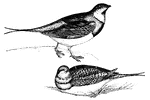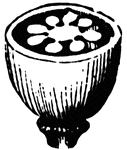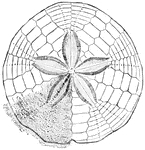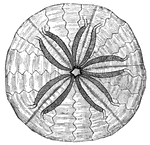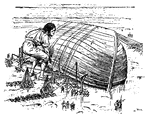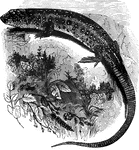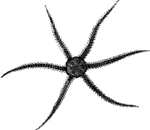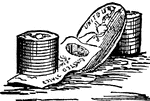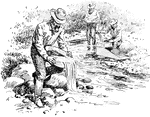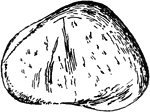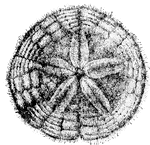
Sand dollar
Sand dollar, the name given to a flattened looking sea urchin, very common on sandy shores.
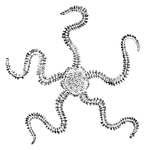
Brittlestar
The arms of the brittlestar are more flexible than those of the starfish. They move by lateral movements…

Foraminifera
Foraminifera are minute shelled animalcules. They secrete a hard covering or shell made of sand or carbonate…
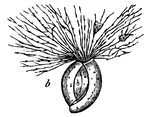
Foraminifera
Foraminifera are minute shelled animalcules. They secrete a hard covering or shell made of sand or carbonate…
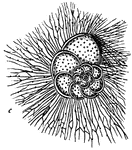
Foraminifera
Foraminifera are minute shelled animalcules. They secrete a hard covering or shell made of sand or carbonate…

Foraminifera
Foraminifera are minute shelled animalcules. They secrete a hard covering or shell made of sand or carbonate…
Foraminifera
Foraminifera are minute shelled animalcules. They secrete a hard covering or shell made of sand or carbonate…
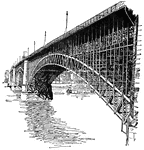
Eads Bridge
A steel arch bridge erected in 1874 and costed around one million dollars. Crosses over the Mississippi…

Interior View of Fort Beauregard
Fort Beauregard, at Bay Point, on the point opposite Fort Walker, was built of sand and palmetto logs…
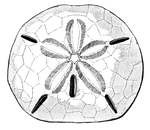
Keyhole-Urchin
A sea-urchin very similiar to the Sand Dollar, but has 5 "keyholes" through its shell.

Bogue Island
"The Federal siege works on Bogue Island, N. C., erected for the reduction of Fort Macon. Our sketch…

Red River
"The war on the Red River. Admiral Porter's fleet passing through Colonel Bailey's Dam, above Alexandria,…
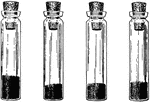
One-third full vial
A vial, approximately one third full of a dark granular substance, with a cork stopper.
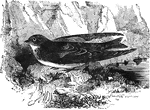
Bank Swallow
The bank swallow (also known as the sand martin) lives in large communities, often of several hundred…

Funeral Cortege
"The funeral cortege, at boston, Mass., of the Sixth Massachusetts soldiers killed at Baltimore. The…

Monocasy Island
The Susquehanna at Monocasy Island. This view is from the left of eastern bank of the Susquehanna, opposite…
Compo
Distant view of Compo. This view is from the top of a high hill northeast of the dwelling of Mr. Ebenezer…

Pine-Tree Shilling
The Pine-Tree Shilling. This is a fac-simile of the first money coined in America. The mint-master,…

Sand Smelt
"Five or six inches long; it is esteemed for the table, and resembles the common smelt in flavor; found…

Abacus
"A tray strewn with dust or sand, used in ancient times for calculating. A contrivance for calculating,…

Panopaea australis
"The Panopaea Australis is a large analogous species, found at Port Natal, on the coast of…

Unio elongata
"The U. elongata is found in Great Britain, and formerly produced numerous pearly; these were…
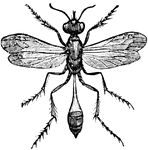
Sand Wasp
"Long Bodied fossorial aculeate hymenopterous insects, commonly called sand-wasps."-Whitney, 1902
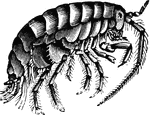
Sand-hopper
"The Common Sand-hopper, Talitrus locusta, which may be met with in thousands upon thousands…

Lob-worm
"Errantia means wandering, and is applied to numerous species, of which the Lob-worm or Lug-worm,…
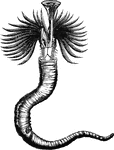
Serpula contortiplicata
"The Serpulae, which form irregularly twisted calcareous tubes, often grow together in large…
Terebella medusa
"Distinguished by their habit of forming a tube or case, within which the soft parts of the animal can…
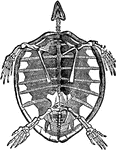
Skeleton of Turtle
"Turtle is, in zoology, the popular name for any species of the Cheloniidæ. They may be distinguished…

Egg of Common Whelk
"Whelk is a popular name for a number of marine gasteropods, and especially applied to species of Buccinum…
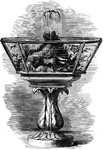
Fountain aquarium
"This is the Aquarium, consisting of a glass tank or fountain, usually of an oblong shape,…

Sand Blast Apparatus
"Sand Blast is one of the most wonderful uses of sand, by means of which glass, stone, metals, or any…

Sand Lizard
"The Sand Lizard is a common European lizard, about seven inches long, of which the tail is four. Usual…
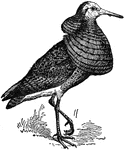
Fighting Sandpiper
"Sandpiper is a popular name for several wading birds."—(Charles Leonard-Stuart, 1911)
!["Starfish is a popular name for any individual of the family Asteridæ, a familiar object on the Atlantic coasts. The body is more or less star shaped, and consists of a central portion, or disk, surrounded by five or more lobes, or arms, radiating from the body and containing prolongations of the viscera. The mouth is situated in the center of the lower surface of the body, and the anus is either absent or on the upper surface. Locomotion is effected by means of peculiar tube-like processes, which are protruded from the under surface of the arms. They possess in a high degree the power of reproducing lost members and abound in all seas. [Pictured] Lesser Sand-star (Ophiura albida)"—(Charles Leonard-Stuart, 1911)](https://etc.usf.edu/clipart/16200/16266/starfish1_16266_mth.gif)
Lesser Sand-Star Starfish
"Starfish is a popular name for any individual of the family Asteridæ, a familiar object on the…
!["Starfish is a popular name for any individual of the family Asteridæ, a familiar object on the Atlantic coasts. The body is more or less star shaped, and consists of a central portion, or disk, surrounded by five or more lobes, or arms, radiating from the body and containing prolongations of the viscera. The mouth is situated in the center of the lower surface of the body, and the anus is either absent or on the upper surface. Locomotion is effected by means of peculiar tube-like processes, which are protruded from the under surface of the arms. They possess in a high degree the power of reproducing lost members and abound in all seas. [Pictured]Gibbous Starlet (Asterina gibbosa)"—(Charles Leonard-Stuart, 1911)](https://etc.usf.edu/clipart/16200/16282/starfish5_16282_mth.gif)
Lesser Sand-star Starfish
"Starfish is a popular name for any individual of the family Asteridæ, a familiar object on the…
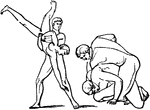
Pancratium
"An athletic game, in which all the powers of the fighter were called into action. The pancratium was…

Chaise
The front of a French gold coin first issued by Louis IX. in the thirteenth century. It was equal to…
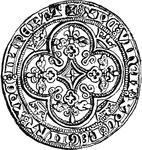
Chaise
The rear of a French gold coin first issued by Louis IX. in the thirteenth century. It was equal to…

Hour-glass
An instrument for measuring time, especially the interval of an hour, by the running of sand out of…

Dredge
Dredging, the excavating or scooping out of soil, mud, sand or rock under water by a machine called…
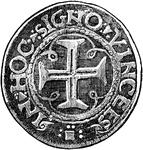
Portugues
A coin of Portugal made in the 16th century weighing 540 grains and worth about $22.50 United States…
